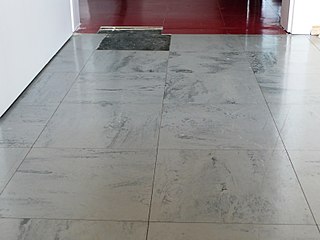Installing a Floor Over an Existing Floor
Clients sometimes ask us if it is possible to install a new floor on top of an existing floor. Installing a new floor on top of an existing floor has cost savings potential as you don't incur the cost of removing and disposing of the old floor. That can save a significant amount of time and labor. Let's take a look at a couple of different types of new flooring and how they can be applied on top of existing flooring.
Hardwood Floor Over Existing Wood Floor
You can install a new hardwood floor over an existing wood floor, provided it meets some important conditions. First, we make sure that doing so won't create problems with height differences at areas such as transitions with other rooms and stairs. Then, we ensure that the existing floor is flat, clean, dry, structurally sound, free of squeaks and free of protruding fasteners.
An existing floor used as a sub-floor has the same flatness requirements as any other sub floor. Per the NWFA Installation Guidelines, those requirements are:
• for fasteners 1 1⁄2 inch and longer, the sub-floor should be flat to within 1⁄4 inch in 10 feet or 3⁄16 inch in a 6-foot radius.
• for glue-down installations and fasteners less than 11⁄2 inch, the sub-floor should be flat to within 3⁄16 inch in 10 feet or 1⁄8 inch in a 6-foot radius.
If the flooring is out of those tolerances, we will need to sand down high spots or fill in the low spots. We also have to keep in mind that if the home was built prior to 1978, the EPA's Lead Renovation, Repair and Painting (RRP) Rule will apply. Something else to be considered before any preparation work on the existing floor can be completed.
Sheet Vinyl Flooring
Vinyl wears well, resists water and is one of the most affordable flooring options available. Installing a sheet vinyl floor is a straight forward project. The key to success is preparation.
Concrete: Sheet vinyl can be installed over concrete if the surface of the concrete is clean, smooth and dry. We repair any holes or cracks. We can lower high spots with a grinder. Any minor bumps can be removed with a masonry chisel and small sledgehammer. (Wear safety glasses.)
Linoleum or vinyl flooring: Sheet vinyl can be laid over old linoleum or vinyl flooring if the existing floor is in good condition. If the old floor has a rough texture or some indentations, we will use a coat of embossing leveler. Applied with a straightedge trowel, the embosser will create a smooth surface to support the new floor. Damaged or loose vinyl flooring will be removed.
Floors requiring underlayment: If you have a hardwood, embossed, cushioned, buckled or uneven floor, it will require an underlayment. Bumps or dips in an old floor eventually will show through the new floor. As time passes, the new floor will acquire the texture of the floor below. If removing the old floor is impractical or the rough area is too severe to use an embossing leveler, we recommend covering it with a new layer of plywood underlayment.
Other Flooring Choices
Of course there are a number of other flooring choices you may want to consider. For bathrooms, new tile over existing tile is the most common option. Once again, preparation of the existing floor is the key to the successful installation of the new floor We start by making sure all the tiles are solidly bonded to the floor. We tap them lightly with a wood mallet or a chunk of 2×4. A hollow sound is an indication that a tile is loose. We remove and reset any loose ones with thin-set. Next, we'll use a 4-ft. level to find any high spots and grind those down using a right-angle grinder with a masonry wheel. Then we sand all the tiles with a belt or orbital sander to scratch any surface glazes. We remove any moldy or loose grout with a rotary tool or carbide scraper. Next we vacuum the tiles and clean with detergent and water to remove dirt, sealers and wax. Finally we'll rinse the surface with clear water and let it dry.


